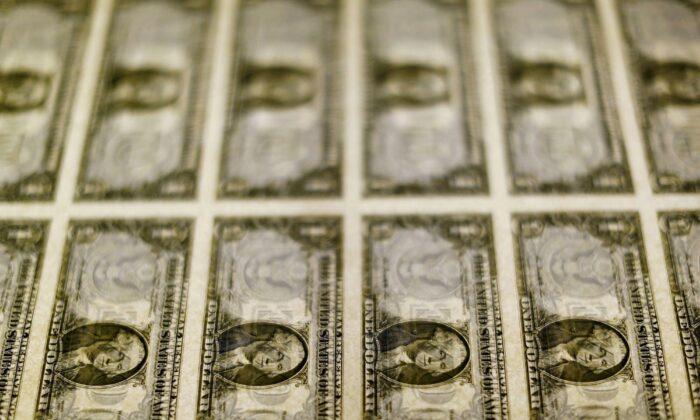SINGAPORE/LONDON—The dollar edged lower on Wednesday in cautious trading as investors awaited U.S. inflation data later this week, while bitcoin was volatile after a fake social media message was posted on the U.S. securities regulator’s account.
The Securities and Exchange Commission (SEC) said someone briefly accessed its X social media account and posted a false message saying it had approved exchange traded funds (ETFs) for bitcoin, a move eagerly awaited by the crypto industry. The SEC said it had not yet approved spot bitcoin ETFs.
Bitcoin slid 1.3 percent to $45,516 after surging to a 21-month peak of $47,897 on the fake post.
Anticipation of a positive SEC decision on ETFs, which is likely to draw billions in new investments, has boosted bitcoin prices in the past two months.
“The reality is most who have followed the saga have moved on and the green light from the SEC is fully priced,” said Chris Weston, head of research at Pepperstone.
In the meantime, the dollar index, which measures the U.S. currency against six rivals, edged 0.09 percent lower to 102.41, after gaining 0.215 percent on Tuesday.
The index is up 1 percent this month, after dropping 2 percent in December as traders reassess how steep and early the rate cuts from the Fed are likely to be.
In December, the Fed surprisingly projecting 75 basis points (bps) of rate cuts in 2024, turbo-charged market expectations of easing with traders last month anticipating as much as 160 bps of cuts. Markets are currently pricing in 140 bps of cuts this year.
Traders are focused on the release of the U.S. consumer price index report on Thursday. The report is expected to show headline inflation rose 0.2 percent in the month and by 3.2 percent on an annual basis.
Inflation easing is a “necessary but not sufficient condition to enable you to have aggressive rate cutting,” said Rob Carnell, Asia-Pacific Head of Research at ING in Singapore.
An imminent rate cut would need payrolls falling and the unemployment rate moving substantially higher, he added. There is “very little evidence that any of that’s happening.”
Fed funds futures indicate a 64 percent probability of the Fed easing in March versus 80 percent a week earlier, the CME FedWatch tool showed.
In other currencies, the euro rose 0.16 percent to $1.0949, while the yen weakened 0.34 percent to 144.96 per dollar, inching closer to the 145 mark.
The Norwegian crown rose 0.3 percent against the euro to 11.2924 after data showed Norway’s core inflation rate fell more than expected in December to 5.5 percent from 5.8 percent in November. That could help bring forward the central bank’s planned policy easing.
The Swedish crown was little changed against the euro at 11.1986 after data showed retail sales in Sweden fell 0.5 percent in November from October and were down 1.7 percent from a year earlier.
Morgan Stanley recommended long positions on NOK/SEK as the Norges Bank is sharply slowing its Norwegian crown sales, while the Riksbank’s FX-hedging programme is about to end.
“The absence of central bank flows suggests that NOK/SEK can trade more on fundamentals—which point to a higher NOK versus SEK. Norwegian data have held up while Swedish data have disappointed the most in the G10.”







